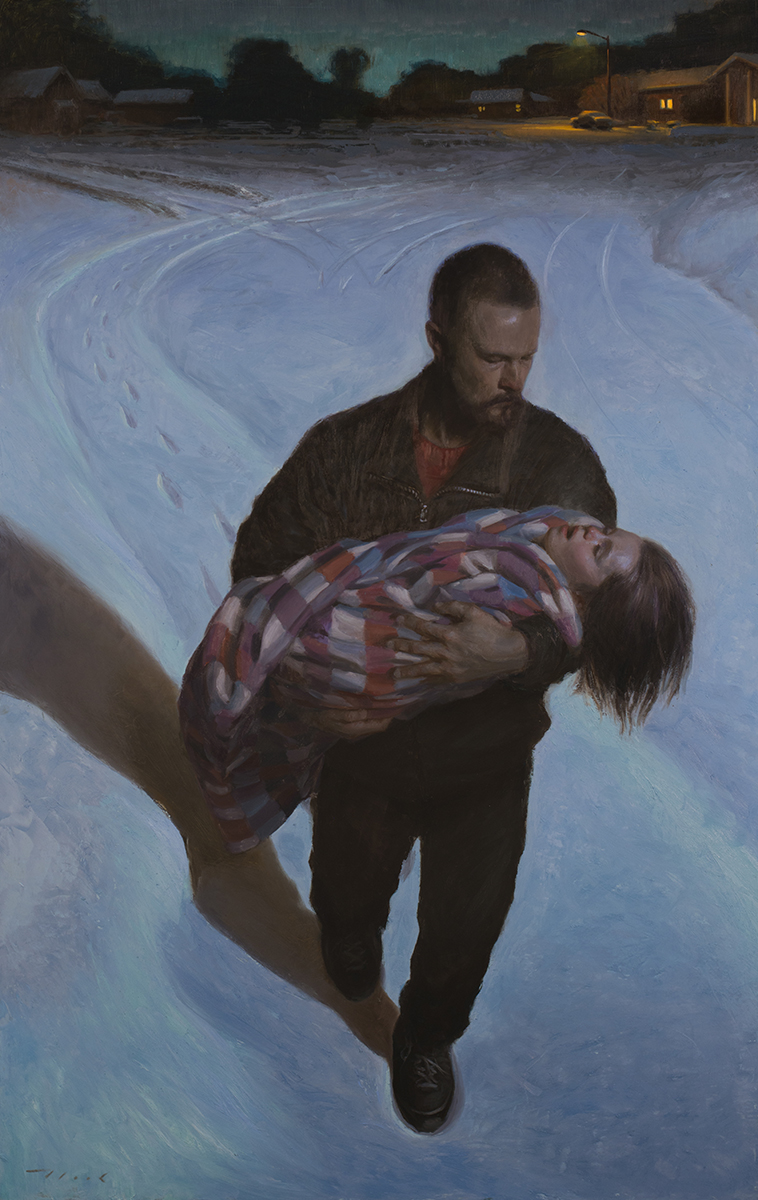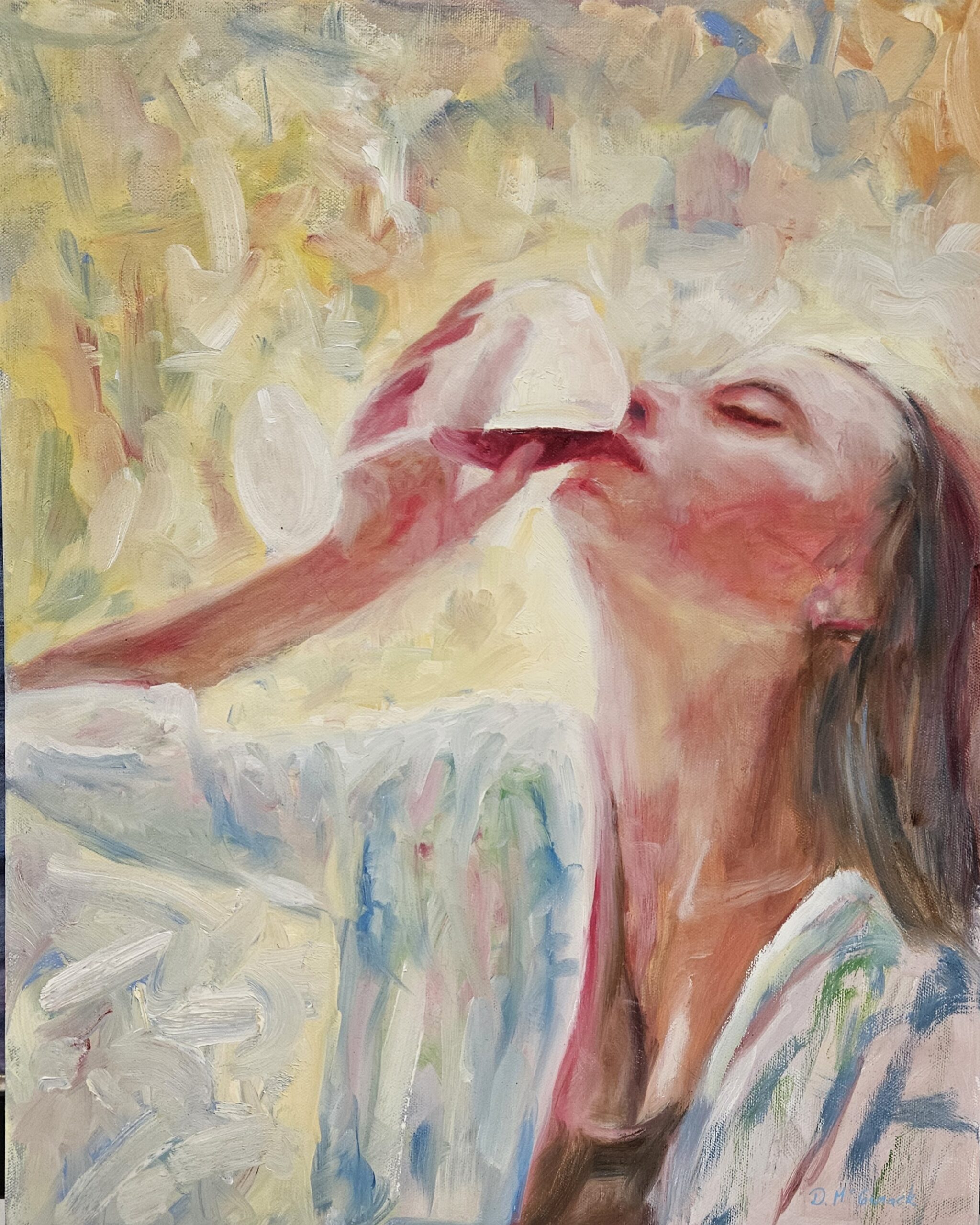Unveiling the Secrets Behind Expressive Figurative Oil Painting Styles
Unveiling the Secrets Behind Expressive Figurative Oil Painting Styles
Blog Article
The Development of Figurative Oil Paint: Comprehending Its Historical Significance and Modern Interpretations
The advancement of metaphorical oil painting functions as an engaging lens where to examine the interaction between artistic expression and historic context. From the precise naturalism of the Renaissance to the emotive power of the Baroque, each age has added layers of significance and technique to this classic medium. Contemporary musicians, drawing from this abundant heritage, are now reinterpreting the human figure in manner ins which challenge traditional stories. As we explore these makeovers, one should consider just how the dialogue in between present and past informs not only creative practice however also social representations in a progressively complex world.
Origins of Figurative Oil Paint
The beginnings of figurative oil paint can be mapped back to the very early Renaissance in Europe, particularly in the 15th century. The advancement of oil paint enabled for higher deepness of shade and detail, enhancing the realism and vibrancy of their job.

In this transformative age, figures were often depicted within contextually abundant atmospheres, showcasing not only their physical characteristics but additionally their mental states. Pioneers such as Jan van Eyck and Titian used the tool's adaptability, employing layering techniques to attain brightness and texture. This technology promoted the portrayal of complex fabrics and the nuances of complexion, contributing to the development of portraiture and narrative scenes.
Furthermore, the Renaissance focus on humanism fostered an appreciation for uniqueness, which consequently influenced musicians to produce more dynamic and relatable figures - figurative oil painting. Because of this, metaphorical oil painting emerged as an effective automobile for storytelling and psychological engagement, preparing for future artistic motions and styles
Secret Historic Movements
Significant historic movements have actually formed the development of metaphorical oil painting, each contributing one-of-a-kind viewpoints and strategies that broadened the tool's opportunities. The Renaissance noted an essential minute, emphasizing realistic look and the human kind, with artists like Leonardo da Vinci and Michelangelo pressing the borders of anatomical accuracy and viewpoint. Following this, the Baroque era brought remarkable contrasts of light and darkness, exhibited by Caravaggio, who infused spiritual motifs with intense emotionality.
The 19th century introduced Romanticism and Realistic look, where artists such as Delacroix and Courbet tested classical ideals, concentrating on specific expression and everyday life. The introduction of Impressionism additionally changed the medium by emphasizing the impacts of light and shade, resulting in a separation from typical representation.
In the early 20th century, movements like Expressionism and Cubism redefined figurative painting with abstraction and the expedition of psychological depth. Each of these movements not only showed the societal modifications of their times yet additionally laid the foundation for modern analyses. The interaction in between these historic activities has actually developed an abundant tapestry of philosophies and styles, influencing modern musicians in their search of catching the human experience on canvas.
Strategies and Products Advancement

Throughout the Baroque duration, methods such as chiaroscuro and sfumato emerged, boosting the emotional vibration of figurative make-ups. Artists started to experiment with lusters and impasto, manipulating structure and luminosity. By the 19th century, technologies like the usage of pre-mixed paints in tubes revolutionized access, allowing musicians to repaint en plein air and catch the short lived effects of light.
The 20th century experienced the intro of synthetic pigments and tools, which broadened the palette and changed the uniformity of oil paints. The expedition of new application strategies, such as scheme knives and brushes of differing tightness, more diversified imaginative expression. Collectively, these advancements show the advancing relationship between materials, methods, and the imaginative vision inherent in figurative oil painting.

Contemporary Interpretations
Contemporary interpretations of figurative oil painting reflect a dynamic dialogue between tradition and innovation, where artists test developed standards and discover varied styles. This development shows up in numerous means, as modern musicians blend classical techniques with modern-day principles, usually resolving social, political, and individual narratives.
Numerous practitioners draw motivation from historical jobs, yet they instill their items with contemporary viewpoints, utilizing the human type as a vehicle for commentary on society, identity, and gender. Artists significantly explore abstraction, distortion, and multimedias, which enables a more comprehensive interpretation of the number and its context.
Additionally, making use of vivid shade combinations and non-traditional make-ups commonly serves to interfere with standard viewing experiences, prompting crucial involvement from audiences. This change in focus expands beyond visual appeals; it mirrors a growing recognition of the complexities of human experience in an interconnected globe.
As metaphorical oil painting remains to develop, it continues to be an important tool for exploring the nuances of modern life, embodying both a regard for heritage and a dedication to progressive idea. The outcome is a rich tapestry of expression that reverberates with the intricacies of the modern human problem.
Influence on Modern Art
The effect of metaphorical oil paint on modern art is profound, as it has actually consistently inspired a myriad of artistic motions and methods throughout the 21st and 20th centuries. From Expressionism to Surrealism and past, the expedition of the human number has remained a central Visit Website style, enabling artists to communicate intricate feelings and stories. This focus on metaphorical depiction has actually brought about a re-examination of traditional techniques, resulting in innovative Discover More methods that blend realism with abstraction.
Furthermore, modern musicians have actually accepted metaphorical oil paint as a way to attend to political and social problems, using the medium to challenge perceptions of sex, society, and identification. The revival of interest in metaphorical operate in current years reflects a yearning for connection in an increasingly electronic globe, where human experience and emotion are paramount.
In addition, the discussion between figurative oil paint and contemporary art appears in the works of musicians such as Kehinde Wiley and Jenny Saville, that draw on historic referrals while instilling their pieces with modern significance. Ultimately, metaphorical oil painting continues to form and redefine contemporary artistic expression, emphasizing its enduring significance in the art globe.
Conclusion
The development of figurative oil paint highlights its historical value and flexibility across various creative motions. From the naturalism of the Renaissance to the stirring expressions of the Baroque and the cutting-edge strategies of modernity, this medium has consistently transformed. Contemporary analyses show unconventional make-ups and vibrant shades, fostering important engagement with political and social themes. Eventually, figurative oil painting continues to be an important tool for exploring the human experience, reverberating greatly in today's digital landscape.
The advancement of metaphorical oil painting serves as a compelling lens with which to take a look at the interaction in between artistic expression and historic context.Significant historical activities have actually formed the evolution of figurative oil painting, each contributing special ideologies and strategies that expanded the tool's opportunities.As historic movements shaped the trajectory of figurative pop over to this site oil painting, the materials and techniques employed by artists have also undergone considerable changes. figurative oil painting.The effect of metaphorical oil paint on modern-day art is extensive, as it has actually consistently motivated a myriad of imaginative motions and methods throughout the 20th and 21st centuries.The development of figurative oil painting underscores its historic value and flexibility throughout different creative motions
Report this page